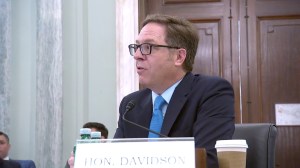U.S. Digital Response appoints new interim CEO

The U.S. Digital Response, the group of technologists that formed in March 2020 to help governments respond to the COVID-19 pandemic, has named Jessica Cole, its chief operating officer and one of its co-founders, as its interim chief executive. Cole’s appointment, announced Monday, followed the departure of founding CEO Raylene Yung to a post in the Biden administration.
“Obviously the other thing that’s top of mind for me today is maintaining trust and relationships with all of the governments we work with, all of the technologists and other volunteers that raised their hands and all of the communities we serve on a day-to-day basis,” Cole said in an interview.

Jessica Cole (LinkedIn)
Along with Cole’s appointment, the U.S. Digital Response also announced the hire of Tina Walha, formerly Seattle’s director of innovation and performance, as its new director of public digital, a role in which she’s tasked to manage and expand the organization’s public-sector partnerships.
Cole, previously a tech policy fellow at the Aspen Institute and the head of innovation and economic development for the City of Walnut Creek, California, said the future of the organization’s work will be dedicated to helping communities build “capacity” for handling crises or sudden demand for technology, as the COVID-19 pandemic did in early 2020. USDR, which arose out of a need for rapid digital transformation in state and local governments across the country, can now help those governments build resilience for future incidents, Cole said.
Yung, who was a Biden transition adviser, will begin a new role working on technology modernization at the General Services Administration in September. Under Yung, the U.S. Digital Response assisted 36 states and territories while assembling a national community of nearly 7,000 volunteer technologists. Cole said keeping that network intact is a high priority.
“That’s the change that we’ve seen,” Cole said. “We’ve moved from the crisis moment of ‘Will this melt down in front of us,’ and we’ve moved into the real resilience-building moment of “What is the system that we believe should exist and what are the steps we can start taking today to get there?’”
Much of the organization’s work has focused on keeping unemployment systems running during spikes in demand for benefits, Cole said. But with a new influx of federal stimulus funding, those governments can now invest in modernizing those systems “for the long haul,” rather than triaging infrastructure with decades-old code.






